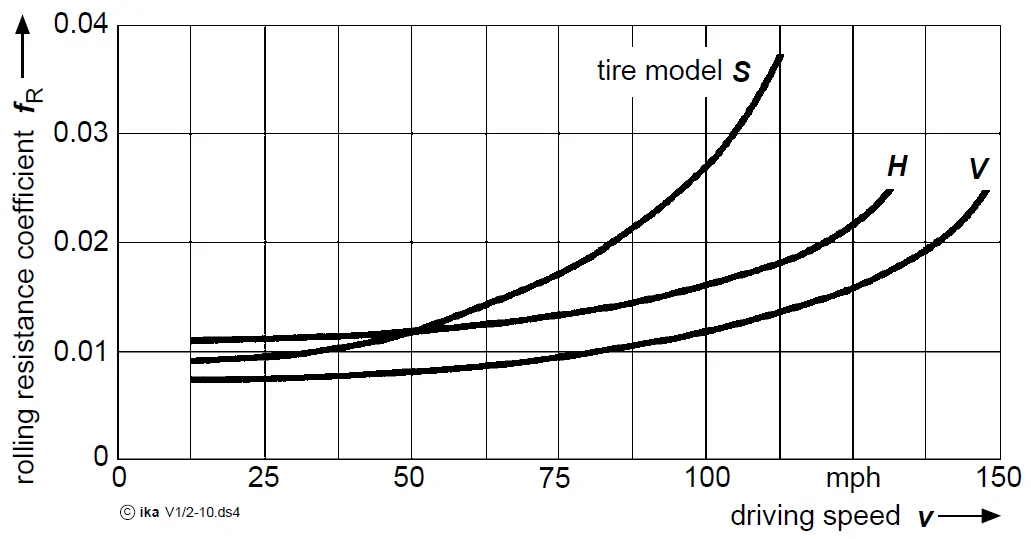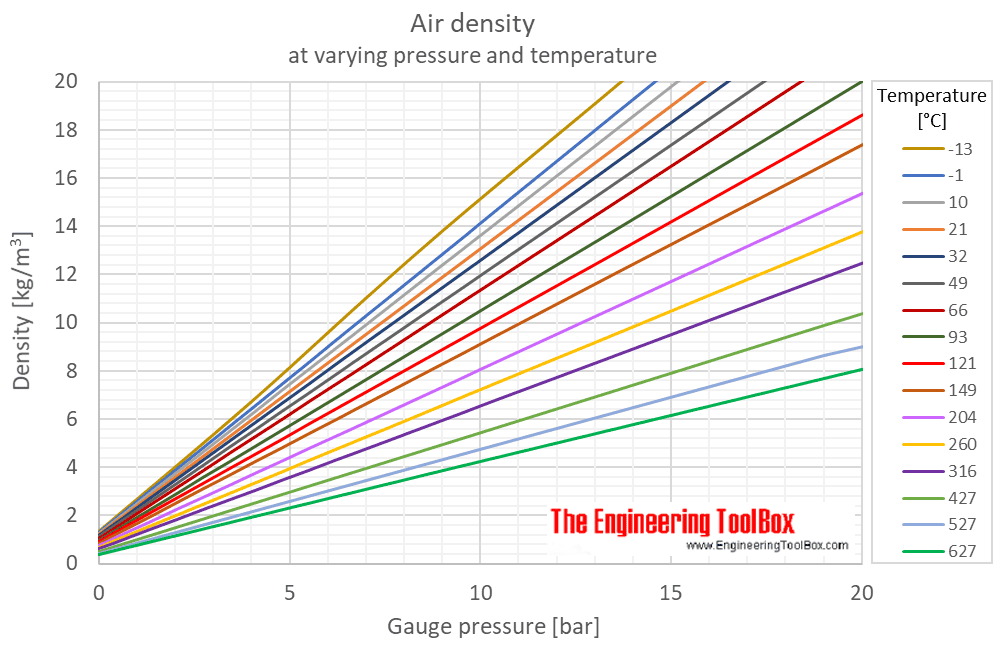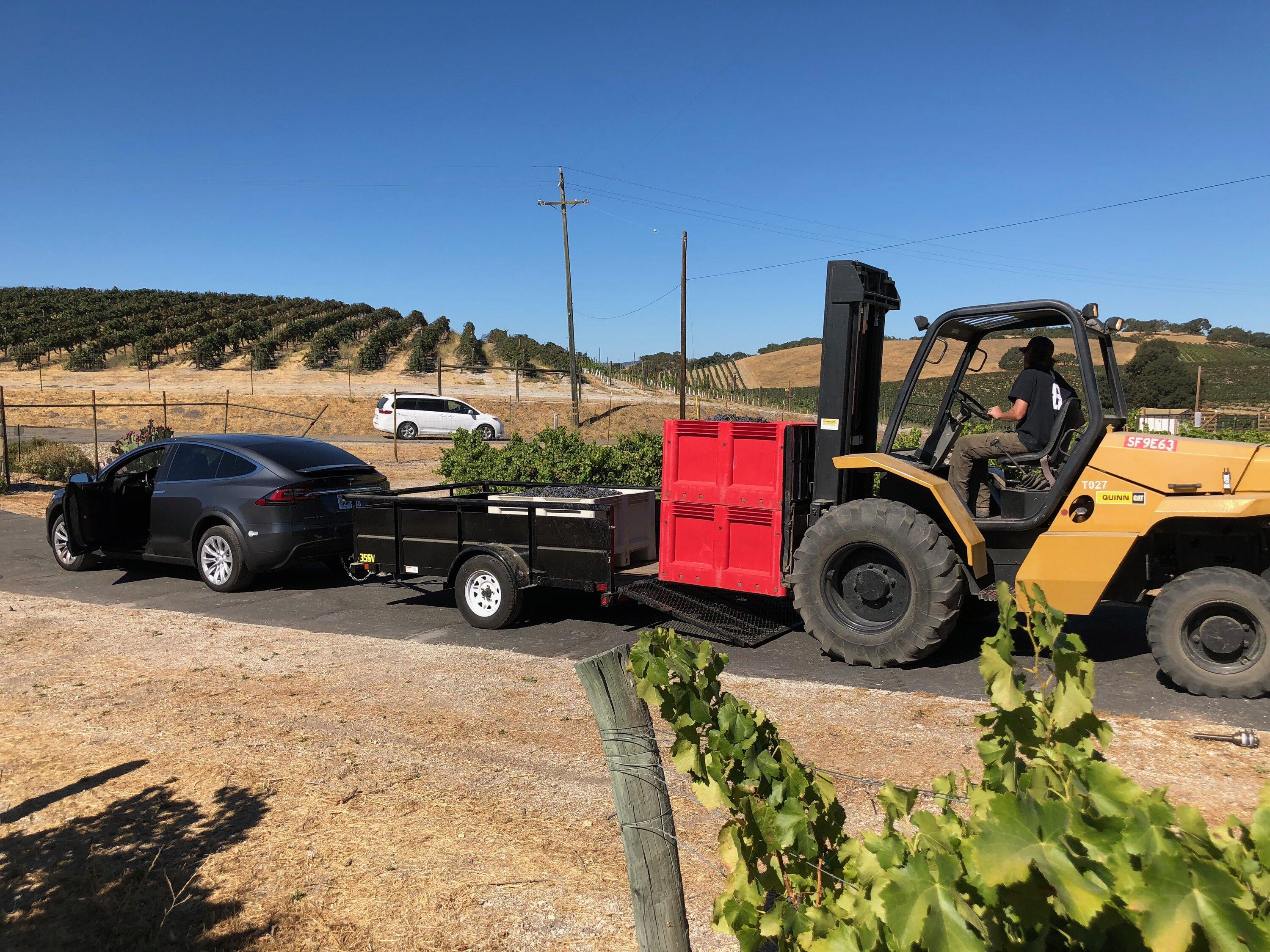Sponsored
Robilium
Active member
- Thread starter
- #32
Yup - that's what I am trying ti figure out.Did your Tesla have All Terrain tires?
My real goal is to go down the 101 in CA 200miles from my house to the ranch. I figure over time battery degradation will go down 10 to 15% so I will need to go 220 to 230 miles plus I found out the hard way that at 5% the ford stops going full speed and can't be on highway. Also always charging to 100% wears batter down faster.
I am supposed to get 320/270miles. thus I figured I would have plenty of headroom
So if it is the AT vs. AW tires reducing my range by 10% then maybe I am ok. When the battery degrades by 10% my tires will probably need to be replaced and I can switch to AW and get that range back.
Avocadodude
Well-known member
- First Name
- Kurt
- Joined
- Feb 24, 2022
- Threads
- 12
- Messages
- 675
- Reaction score
- 744
- Location
- Fallbrook, CA
- Vehicles
- F150 Lariat
I just want to see the trailer with 3 bins of fruit in it ?.Btw. FWIW my Tesla X is almost 7,000 pounds (6200) and yes I used it as a truck
Towed thousands pounds of fruit, multiple barrels.

Amps
Well-known member
- Joined
- Feb 21, 2022
- Threads
- 5
- Messages
- 1,336
- Reaction score
- 1,519
- Location
- Mid-Atlantic
- Vehicles
- Bolt
* - "if my driving mimics the EPA test cycle"I am supposed to get 320/270miles.*
Highway:
Extended Range (all trims, except of Platinum): 283.1 mi (455.5 km)
Platinum trim: 267.6 mi (430.6 km)
EPA City:
Extended Range (all trims, except of Platinum): 350.2 mi (563.5 km)
Platinum trim: 326.5 mi (525.3 km)
"All testing is done in a laboratory on a dynamometer."
Sponsored
FordLightningMan
Well-known member
- Joined
- Dec 21, 2021
- Threads
- 9
- Messages
- 580
- Reaction score
- 721
- Location
- Upstate New York
- Vehicles
- F150
Just for further illustration, I earlier in this thread talked about how my XLT SR (no heated seats) was getting 1.3 or 1.4 on cold winter days. We had a spike in temperature by 40 degrees and I went up to 2.3. That puts me from barely over 100 miles in range to over 200 miles, just because of a one day temperature spike. Below freezing to above freezing is a completely different experience in this truck.
MM in SouthTX
Well-known member
If you are on a freeway with lots of traffic you will get perhaps 25% better mileage than of you are on I-10 in West Texas pushing your own air. If you have ever towed something with a lot of wind resistance (not saying you haven’t) you will understand. You can feel the effect of having traffic break the wind for you in how hard you have to push on the accelerator.I would expect to get around 1.8 at 75mph on flat ground with no wind. If you're driving those speeds with a headwind it will be worse.
I do think the EPA system is just plain stupid. They should rate the vehicle at 75mph which is much more realistic than 60 or 65. You can't drive on any freeway at 65 without getting run over.
Pulling my horse trailer with the Expedition at 70-75, I would see 7.5-8 mpg on freeways with traffic, down to literally 5 mpg into a 15-20 mph breeze (only managing 70), so that is up to a 35% difference. A lot of people have not experienced that. When you see reports of highway mileage that vary greatly, ask about the traffic.
cvalue13
Well-known member
- Joined
- Jul 24, 2022
- Threads
- 23
- Messages
- 789
- Reaction score
- 764
- Location
- Austin, Texas
- Vehicles
- ‘22 Lightning ER Lariat
- Occupation
- Fun-Employed
You can affect it by as much as 30% with the same diameter but different widths, compounds, and patterns.
While I don’t know of anyone doing the test in a Lightning, C&D did it in the Rivian and at 75mph the AT’s resulted in a nearly 30% range reduction. And that was at proper tire inflation (it could get significantly worse if tires are under inflated), and ~consistent air temps. The C&D test also doesn’t account for the possibility that certain ATs can perform differently / even worse at higher speeds.Has anyone done a test on Range impact of the AT vs AW tires? I couldn't really find a concrete answer on my searches.
That C&Ds test was done at 75mph is telling. Since drag increases by velocity squared, the difference un drag between 60 and 75mph is something like 50% higher, which means the engine power required to overcome that increase in drag is significantly higher (if it takes 20hp to push the car through the air at 50mph, it will take eight times that – 160hp – to overcome drag at 100mph). If air density (due to colder weather) also increases, grab your ankles.
And while rolling resistance is more like a constant for a given tire at given inflation at a given vehicle weight, at higher speeds rolling resistance does increase due to essentially the tire itself changing certain materials qualities and forces at higher speeds - as such these increases of rolling resistance with speed can be materially different between different tire models due to their different construction/materials:

In all, imagine a different C&D comparison:
Vehicle #1: street tires, perfectly inflated, traveling at 65mph, in 80 degree temperatures.
Vehicle #2: ATs, 5% under-inflated, traveling at 75mph, in 50 degree air temps,
If merely changing the tires in the C&D test caused a nearly 30% range hit, what’s the guess in this second experiment that the range hit exceeds 50%? And what if OPs tires have a worse high speed rolling resistance profile than the AT in the C&D test?
But none of this is special to BEVs, and is true of any vehicle - the source of energy is agnostic to the energy requirements needed to overcome the basic physics. All these effects are true of our ICE trucks as well, we just paid at the pump and ignored it since we never had to worry about range/refueling opportunities.
Accordingly, if you need the range because of a lack of infrastructure for recharging, then the same rules applied as ever in ICE vehicles: slow down, keep tires properly inflated, and choose tires with low rolling resistance.
The (U.S.) national 55mph speed limit wasn’t chosen for safety (though it did have safety effects), it was put in place during the 1970’s energy crisis to reduce fuel consumption.
Yellow Buddy
Well-known member
- Joined
- Feb 5, 2022
- Threads
- 26
- Messages
- 2,480
- Reaction score
- 3,297
- Location
- Mid-Atlantic
- Vehicles
- F-150L Pro, Rivian R1T, Model S, Model X
- Occupation
- Smart Ass
Or even just understanding the dynamics of this. When I go on longer trips I bump the tire pressures above recommended. Those are typically highway trips so 3-5psi over would net me a good amount of range back.While I don’t know of anyone doing the test in a Lightning, C&D did it in the Rivian and at 75mph the AT’s resulted in a nearly 30% range reduction. And that was at proper tire inflation (it could get significantly worse if tires are under inflated), and ~consistent air temps. The C&D test also doesn’t account for the possibility that certain ATs can perform differently / even worse at higher speeds.
That C&Ds test was done at 75mph is telling. Since drag increases by velocity squared, the difference un drag between 60 and 75mph is something like 50% higher, which means the engine power required to overcome that increase in drag is significantly higher (if it takes 20hp to push the car through the air at 50mph, it will take eight times that – 160hp – to overcome drag at 100mph). If air density (due to colder weather) also increases, grab your ankles.
And while rolling resistance is more like a constant for a given tire at given inflation at a given vehicle weight, at higher speeds rolling resistance does increase due to essentially the tire itself changing certain materials qualities and forces at higher speeds - as such these increases of rolling resistance with speed can be materially different between different tire models due to their different construction/materials:

In all, imagine a different C&D comparison:
Vehicle #1: street tires, perfectly inflated, traveling at 65mph, in 80 degree temperatures.
Vehicle #2: ATs, 5% under-inflated, traveling at 75mph, in 50 degree air temps,
If merely changing the tires in the C&D test caused a nearly 30% range hit, what’s the guess in this second experiment that the range hit exceeds 50%? And what if OPs tires have a worse high speed rolling resistance profile than the AT in the C&D test?
But none of this is special to BEVs, and is true of any vehicle - the source of energy is agnostic to the energy requirements needed to overcome the basic physics. All these effects are true of our ICE trucks as well, we just paid at the pump and ignored it since we never had to worry about range/refueling opportunities.
Accordingly, if you need the range because of a lack of infrastructure for recharging, then the same rules applied as ever in ICE vehicles: slow down, keep tires properly inflated, and choose tires with low rolling resistance.
The (U.S.) national 55mph speed limit wasn’t chosen for safety (though it did have safety effects), it was put in place during the 1970’s energy crisis to reduce fuel consumption.
Even on the exact same tires and weather, I have seen a 20-30% variation with just driving habit and tire inflation changes. I normally average 250-260 miles on the R1T but am able to get 320-330 when I overinflated and go easy on my throttle transitions. That's not hypermiling, that's still doing 70-75mph, but taking care not to go above 85mph and having an easy transition when I do need to accelerate and decelerate.
Robilium
Active member
- Thread starter
- #40
While I don’t know of anyone doing the test in a Lightning, C&D did it in the Rivian and at 75mph the AT’s resulted in a nearly 30% range reduction. And that was at proper tire inflation (it could get significantly worse if tires are under inflated), and ~consistent air temps. The C&D test also doesn’t account for the possibility that certain ATs can perform differently / even worse at higher speeds.
That C&Ds test was done at 75mph is telling. Since drag increases by velocity squared, the difference un drag between 60 and 75mph is something like 50% higher, which means the engine power required to overcome that increase in drag is significantly higher (if it takes 20hp to push the car through the air at 50mph, it will take eight times that – 160hp – to overcome drag at 100mph). If air density (due to colder weather) also increases, grab your ankles.
And while rolling resistance is more like a constant for a given tire at given inflation at a given vehicle weight, at higher speeds rolling resistance does increase due to essentially the tire itself changing certain materials qualities and forces at higher speeds - as such these increases of rolling resistance with speed can be materially different between different tire models due to their different construction/materials:

In all, imagine a different C&D comparison:
Vehicle #1: street tires, perfectly inflated, traveling at 65mph, in 80 degree temperatures.
Vehicle #2: ATs, 5% under-inflated, traveling at 75mph, in 50 degree air temps,
If merely changing the tires in the C&D test caused a nearly 30% range hit, what’s the guess in this second experiment that the range hit exceeds 50%? And what if OPs tires have a worse high speed rolling resistance profile than the AT in the C&D test?
But none of this is special to BEVs, and is true of any vehicle - the source of energy is agnostic to the energy requirements needed to overcome the basic physics. All these effects are true of our ICE trucks as well, we just paid at the pump and ignored it since we never had to worry about range/refueling opportunities.
Accordingly, if you need the range because of a lack of infrastructure for recharging, then the same rules applied as ever in ICE vehicles: slow down, keep tires properly inflated, and choose tires with low rolling resistance.
The (U.S.) national 55mph speed limit wasn’t chosen for safety (though it did have safety effects), it was put in place during the 1970’s energy crisis to reduce fuel consumption.
Good food for thought and I didn't know the 55mph tid bit
A lot of the comments make sense too - it definitely seems to be more sensitive to cold and need to pre condition battery. The wind and no drafting at 70-80 mph is a big impact. I am really intrigued on the tire side of things for the 'free' upgrade from Ford for the AT vs. AW due to supply chain.
Sponsored
cvalue13
Well-known member
- Joined
- Jul 24, 2022
- Threads
- 23
- Messages
- 789
- Reaction score
- 764
- Location
- Austin, Texas
- Vehicles
- ‘22 Lightning ER Lariat
- Occupation
- Fun-Employed
I’m not super agile with the “cold” temps that begin to affect battery performance, per se. But particularly with a long drive, conditioning isn’t such an effect in that the battery will condition with driving and not too long into the trip cease to be a factor.it definitely seems to be more sensitive to cold and need to pre condition battery.
But as a separate matter, air temperature (and pressure! and dew point!) when driving at highway speeds is a significant contributor to drag:

Humid, low pressure, hotter air is far easier for a vehicle to push through than dry, high pressure, cold air. And these air resistance effects are seen as between any temps including 70°F and 80° not just those colder temps that may affect battery performance.
For related reasons (and altitude effects on density/pressure), this is why pilots of certain aircraft (as I understand it) have to consider all these metrics to understand aircraft performance under varying air density conditions.
Zprime29
Well-known member
- First Name
- Brandon
- Joined
- Jul 26, 2022
- Threads
- 42
- Messages
- 2,476
- Reaction score
- 2,630
- Location
- Tucson, AZ
- Vehicles
- 2022 Lightning ER, 2025 XC90 Recharge
Wouldn't higher humidity make the air more dense since there is an increase in water droplets and thus increase the amount of energy required?Humid, low pressure, hotter air is far easier for a vehicle to push through than dry, high pressure, cold air.
cvalue13
Well-known member
- Joined
- Jul 24, 2022
- Threads
- 23
- Messages
- 789
- Reaction score
- 764
- Location
- Austin, Texas
- Vehicles
- ‘22 Lightning ER Lariat
- Occupation
- Fun-Employed
That would be my intuition as well, but apparently the physics of it all is contrary to intuition.Wouldn't higher humidity make the air more dense since there is an increase in water droplets and thus increase the amount of energy required?
Namely, that “water droplets” are not what is “in” the air, but instead water vapor - which on a volume basis is lighter than (and displaces) air.
Zprime29
Well-known member
- First Name
- Brandon
- Joined
- Jul 26, 2022
- Threads
- 42
- Messages
- 2,476
- Reaction score
- 2,630
- Location
- Tucson, AZ
- Vehicles
- 2022 Lightning ER, 2025 XC90 Recharge
That just blew my mind man!That would be my intuition as well, but apparently the physics of it all is contrary to intuition.
Namely, that “water droplets” are not what is “in” the air, but instead water vapor - which on a volume basis is lighter than (and displaces) air.
Similar threads
- Replies
- 6
- Views
- 3,443


